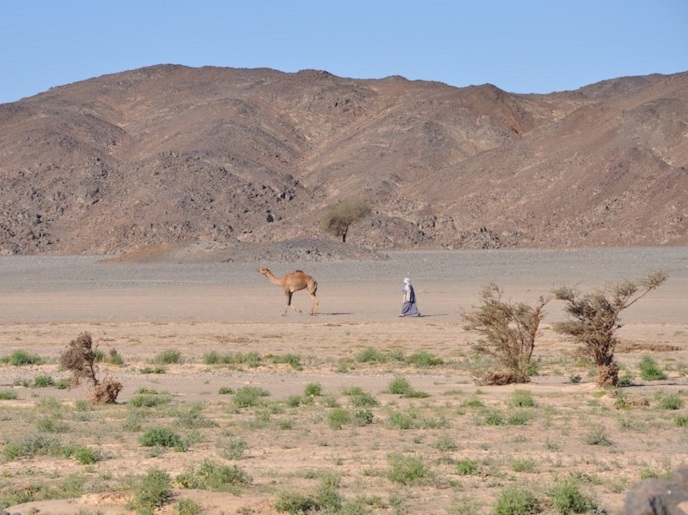Uncovering the social elements of deserts
Deserts can conjure up images of desolate, lifeless places where humans spend little time. But the opposite is true: throughout history, deserts have served as important resources and social spaces of linked societies. The Eastern Desert (ED) of Egypt, for example, has been considered an empty space except when the populations of the Nile Valley went there to exploit its resources or gain access to the Red Sea. Yet it has almost never been empty, says Bérangère Redon(opens in new window), specialist in Archaeology and History of Ptolemaic Egypt at the French National Centre for Scientific Research (CNRS)(opens in new window) and Desert Networks(opens in new window) project coordinator. “Nomadic populations from different backgrounds have lived there or crossed it since time immemorial,” she says. “Simply their way of life and their very limited material culture do not allow them to be easily understood. They did not produce texts, unlike the populations of the Nile Valley.”
Revealing secrets of the desert
Thanks to the Desert Networks project, funded by the European Research Council(opens in new window), the importance of this desert region as a social nexus is apparent. Nomads, Egyptians, Greeks, and people from the Roman Empire all stamped their mark, so the goal of the project was to write a new history of the ED, from the time of the Pharaohs through to the Romans, further exploring these networks. “We have been able to understand these many and varied inhabitants of the desert, and their relationships to each other in more detail through their role in the circulation networks,” Redon explains. “We have proof that the nomadic people served as guides for the expeditions of the Hellenistic period, in the 3rd century BC, and they also bred and provided camels for these same expeditions.”
Diving into the deserts
The Desert Networks team spent the first two years of the project collecting data, and creating a series of tools, including a shared database with a geographic information system(opens in new window), now available online(opens in new window). This included all data available on over 280 known archaeological sites, including the historiography, location, remains, artefacts and ecofacts found there. There were many well-preserved texts there, too. Over the last three years, the team has processed the data. They reconstructed the physical networks of the desert using a numerical model to reproduce camel itineraries. By focusing on the distribution of certain artefacts, such as amphoras, they could recreate economic networks – revealing not only local networks but how they linked to other regions of the world, like India and the Mediterranean. Finally, they analysed social networks of those people who passed through the desert during this period.
A world of hidden water
One of the major findings was not only that the desert was not as unliveable as often thought, but that people found many water sources to sustain them thanks to empirical knowledge acquired through long experience in the desert. “The question of water is central and our work has shown that, for those who know how to look, water is in fact very present in the Eastern Desert,” Redon adds. “Here again, the nomadic factor is important, because they know the water points and were able to help the expeditions find them.” The team also proved that miners or soldiers posted in small forts along the desert roads developed an efficient desert agriculture, to grow vegetables and perhaps even farm fish, by building water reservoirs. “We even found baths in the desert, proof that the water resource was abundant and that hygiene was not neglected!” Redon says.







